Used Cabinets: Save Big On Your Kitchen Remodel
Remodeling your home can be a fun way to customize your space, but it can get expensive – even if you're frugal. Thrifting, reusing, and upcycling...
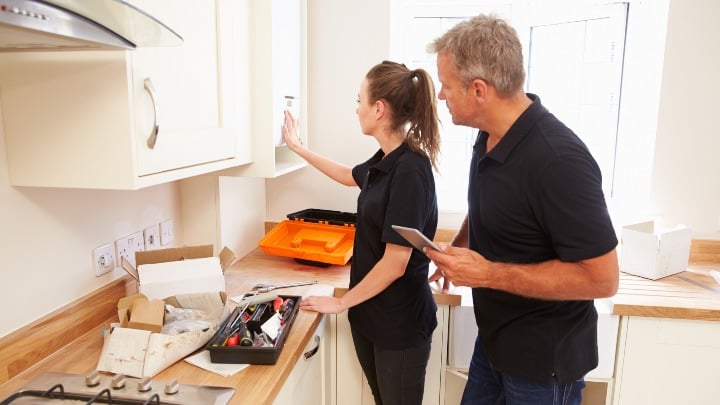
Installing your own cabinets is possible! While it's true that it does take a bit of skill, some time, and a couple of pairs of helpful hands, it's totally possible, even for first-time homeowners, to DIY a kitchen cabinet installation.
Here's a complete guide to installing kitchen cabinets, including pro tips and tricks to get it right the first time!
Floor or wall cabinets (find the perfect set at Twin Cities Habitat for Humanity ReStore!)
Tape measure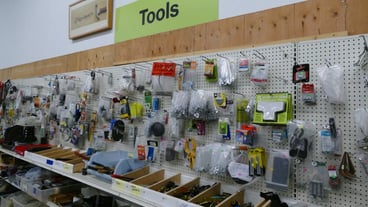
2' level
8' level
Stud finder
Contractor's pencil
Drill or impact driver with drill bit and screwdriver heads
Screws (at least 2" depending on depth of cabinet boards)
Shims (to level or plumb cabinets against uneven floors or walls)
Before breaking out the tape measure, make a plan to tackle the project. Here's what to keep in mind:
Block off at least a whole day. DIY kitchen cabinet installation isn't a quick job, especially if you want to do it right.
Resource: Replacing old cabinets? Here's how to upcycle the old ones
Get a friend or two to help. There are some key steps where having a pair of helping hands is a must.
Check and double-check your measurements at every step. It might not be visible to the naked eye, but most floors and walls are uneven, so you can't extrapolate or assume your measurements. Even if it's just a little off, you'll notice when the project is done.
Got everything ready? Let's get to the step-by-step guide!
First things first: find the high point on the floor. As we said, most floors are uneven. Set your 8' level on the ground against the wall. If you see any space between the level and the floor, or if the level seesaws a bit, the floor is uneven somewhere in that spot. You need to find the highest spot and measure everything from there, or you might end up running out of space as you're installing the cabinets.
Resource: Should You Buy Cabinets or Appliances First?
Use your 8' level all the way around the room, marking the highest spot you find. From that point, measure up the height of your lower cabinets and mark that point on the wall. Mark that point all the way around the room, using a level to draw a line between each point.
PRO TIP: If you're installing multiple cabinets side-by-side, you can connect them to each other before attaching them to the wall. It's tricky, though, so make sure they're all perfectly level and flush with one another.
Decide how much space you want between the top of your wall cabinet and the ceiling. Starting from the ceiling, measure down the full height of the cabinet you're installing. Add the amount of space you want to leave above the cabinet (say 10 inches) to your earlier measurement. Mark that line all the way across the room. Make sure that line is parallel with your "high point" line.
Leave enough space between the bottom of your wall cabinets and the top of your lower cabinets. If you're installing both upper and lower kitchen cabinets in the same spot, make sure there's plenty of space between them for appliances and countertops (about 17" should be enough for most appliances).
Locate and mark the studs in the wall in the spots you'll be installing the cabinets.
Resource: Tips & Tricks for Buying Kitchen Cabinets [VIDEO]
Duplicate the stud marks in the same places on the back side of the cabinet. Drill pilot holes in those marks on the cabinet.
Line up the bottom of the cabinet with your wall marking from earlier (to leave space above and below the cabinet as desired), and line up the pilot holes in the cabinet with the studs in the wall. Drill screws through the pilot holes at the top of the inside of the cabinet and into the stud.
Note: this step is a lot easier if you have a helping hand that can hold the cabinet in place while you screw into the studs.
With those first couple of screws secured, use a level on the sides of the cabinet to make sure it's plumb. If it's not plumb, shim up the space between the wall and the cabinet until it is, then screw in the remaining pilot holes.
With the cabinet secured to the wall, reinstall any shelves or doors.

As you did for the upper cabinets, measure the distance between the studs in the wall and mark those points on the strongest parts of the back of your lower cabinet (usually a horizontal bar made of wood or pressboard that runs the length of the cabinet). Drill pilot holes in those points–one for each stud–so you can put screws through them later.
Align the top of the cabinet with your "high point" mark from earlier. If the floor is uneven, you might need to add shims between part of the cabinet and the floor to make it line up perfectly.
Keeping your high point line even with the top of the cabinet, line up your pilot holes with the studs in the wall and put a screw through the pilot hole and into the studs.
Note: Don't tighten every screw just yet–do that in the next step after making sure everything's plumb and level.
If there's space between the wall and the cabinet (which there likely is), add shims to fill any extra space. Now you can tighten the screws in the remaining pilot holes.
Check that the top of the cabinet is level all the way around. If it's uneven, add shims underneath to even it out.
With the cabinet secured to the wall, reinstall any shelves or doors.
At Twin Cities Habitat for Humanity ReStore, you can shop for everything you need to install kitchen cabinets, including cabinets in all sorts of styles and sizes–and if you need a little more pop, you can even get creative with our DIY cabinet design tips. Stop by ReStore to discover your next project today!
Your gift unlocks bright futures! Donate now to create, preserve, and promote affordable homeownership in the Twin Cities.
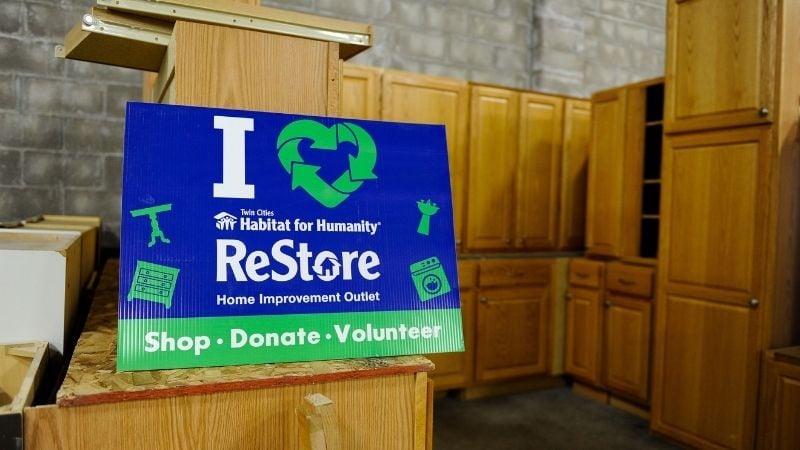
Remodeling your home can be a fun way to customize your space, but it can get expensive – even if you're frugal. Thrifting, reusing, and upcycling...
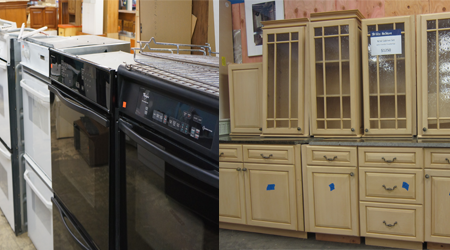
Remodeling your kitchen? Before you start shopping, you need to make one critical choice: cabinets or appliances first? This decision can save you...
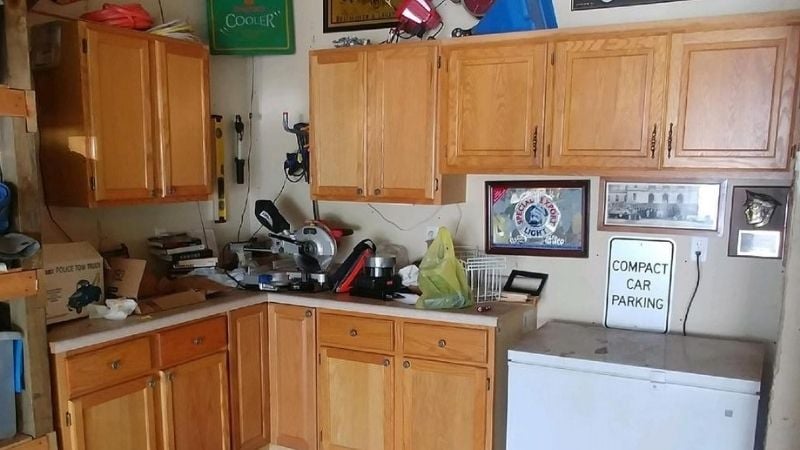
Remodeling a kitchen requires a lot of planning, and some of it has nothing to do with the decor. For example, what are you going to do with those...